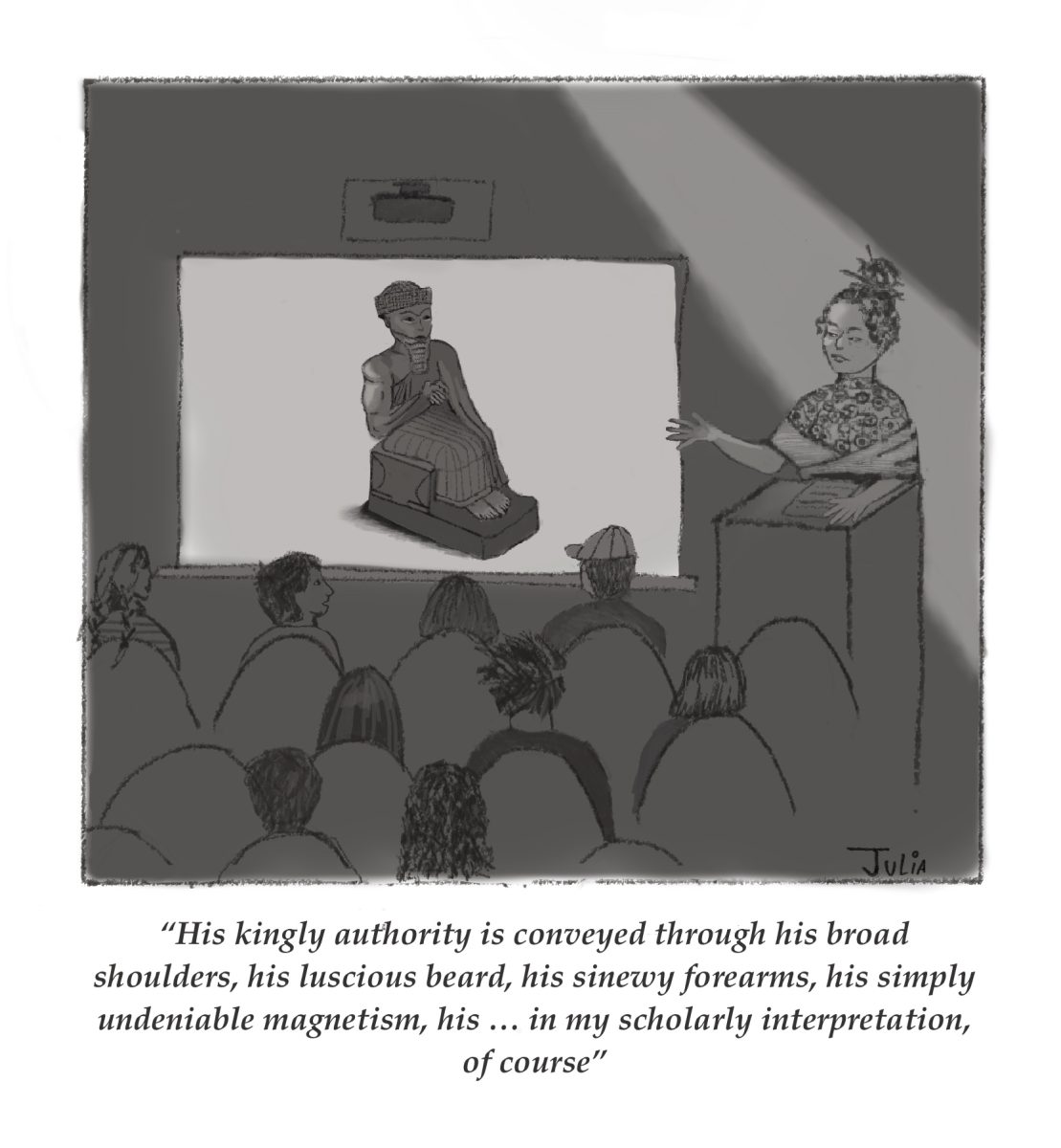
Here’s a prediction: Within the next 20 years, our current approach to grading in higher education will unravel. Colleges will throw away A’s and B’s and bring in a new system.
Why will this happen? Because grade inflation — which has steadily undermined grading practices for decades — will finally render grades obsolete. When average GPAs near their upper limit (Harvard’s 2022 average was already 3.8), grades will stop serving as effective educational tools. Schools will have no choice but to find alternatives.
I’m writing this piece to sound the alarm. If we’re going to overhaul grading practices in higher education — and, let’s face it, we’re going to have to — then there are a lot of discussions that need to happen first. An endless string of committees will have to address big questions: Why do we use grades? How do we make them less arbitrary? What on earth does an “A-/B+” even mean?
If we want to implement a new grading system before the current one collapses, those discussions should start today. They really should have started years ago, before 80 percent of grades given at Yale were in the A range.
But to build the new grading system, we need to understand the current one and why it’s breaking down.
What are grades for?
I got a B+ on my first paper at Williams. That score instantly conveyed information: I’d done an OK job, but there was room for improvement. So I met with my professor, kept studying, and wrote a better second paper. Herein lies one purpose of letter grades: They are supposed to serve as an incentive. Good scores encourage students to do their readings and pay attention. Bad scores punish students for cheating and skipping class.
But grades serve a second, crucial purpose: They provide information to employers. When considering whether to take applicants for an internship, a hiring manager has very little information upon which to base their decision. Is a student a hard worker? Are they good at math? Unable to directly answer these questions, employers use GPAs as a shorthand to tell students apart.
So, what causes grade inflation? Part of the rise in grades has occurred because students, on average, are more academically gifted than before. A high schooler today needs to be chosen over 12 other applicants in order to be admitted to Williams. It makes sense that the Class of 2028 will receive higher grades than the Class of 1950. Today’s student body is more competitive.
But not all inflation can be attributed to changes in the student body. There’s also competition. Students seeking good grades often choose professors who dole them out. In response, professors — eager for full classrooms, positive course evaluations, and bright futures for their students — give out the grades that people want.
Competition for good grades isn’t just occurring between students at a single college. It spans all of higher education. Were Williams GPAs lower than those at Amherst, our alums’ resumes would look worse in comparison. Consequently, even if the College wished to keep grades low, it would still be in its best interest to inflate scores.
Inflate-gate
In 1973, the average grade for a class at Williams was roughly 3.00. By 2000, it had climbed to 3.33, and by 2019, it had risen further to 3.52. After 2019, the College stopped releasing data entirely. However, it doesn’t take a detective to determine that grades have continued to rise in the wake of the pandemic. That’s what has happened at every peer institution brave enough to disclose GPA data.
Grade inflation has been accompanied by its lesser-known yet more dangerous sibling, grade compression. As more students get 3.8s and 3.9s, the grade distribution begins to squash up against its 4.0 ceiling, and the bell curve tightens. As a result, there is less variation between students’ scores. Instead of some students having a 2.8 and others having a 3.3, now we’re splitting hairs between a 3.74 and a 3.77. Professors start giving grades like “A-/B+” and “check plus plus” in order to sort students into an ever-narrower slice of the alphabet.
Is grade inflation, and its associated compression, a problem? Yes. Here are four reasons why.
First, in the extreme case, if everyone receives an A in a class, the promise of a good grade stops being an incentive. Anyone who has attended a Winter Study Pass/Fail course has witnessed this unfortunate reality. Students stop pushing themselves, stop studying, and settle for less than what they’re capable of.
I wish we lived in a world where everyone did all their readings out of an unadulterated love for the liberal arts — but students are busy people. We constantly juggle extracurricular, professional, social, and financial obligations. Classes that do not demand attention will too often be overlooked in favor of priorities that do.
Second, grade inflation makes students risk-averse. Decades ago, when grades were less inflated, students weren’t punished for being adventurous. If you wanted to try a math class, you might have gotten a B-, but back in the 1970s, nearly everyone’s transcript had a few of those.
But with the grade distribution compressed, all risk is bad risk. I know students who have swapped majors, dropped courses, and chosen to take core classes while abroad — all in an effort to avoid getting a few bad grades. This is bad pedagogy. A liberal arts education should reward risk-taking.
Third, grade inflation means that students are investing more time into extracurriculars and networking in order to stand out. You might think our current grading system is unfair (it is). But with GPAs rendered obsolete, employers instead look for candidates who have internships, who have networked, and who know to apply for positions early. These criteria are all less meritocratic than grades.
Fourth, grade compression harms students who come to campus less prepared. Back when grades were less inflated, an Eph could collect a few B-’s during their first semester and still be a contender for grad school fellowships, Latin honors, and other competitive positions. What mattered was that students improved overall — making up for low scores earned early by getting exceptionally high scores later in their academic careers.
But grade compression means that exceptionally high scores no longer exist. A few low grades earned in freshman fall can permanently change a student’s position on the College’s grade distribution.
Time for an overhaul
Year after year, inflation has chipped away at our grading system. As a result, schools’ scoring practices are now out of line with their ideals.
Colleges are aware of the problem. Indeed, they’ve tried for decades to fix it. Williams has issued memos with grading targets (in 2019, 100-level courses had a target average of 3.2), increased and then reduced grade transparency, and added a litany of Pass/Fail scoring mechanisms to try to make grading more fair. Elsewhere, institutions have implemented grade quotas, introduced score curves and ceilings, and changed transcripts to include class averages.
Nothing has worked. Grades have crept up, compression has worsened, and the system is more broken than ever.
Why hasn’t anything succeeded? It’s because no single school can fix this problem on its own. I want grading at the College to be better, yet I shudder to think of what my transcript would look like if my scores were accompanied by class averages. I don’t want a Williams transcript to look worse than an Amherst one. It would be embarrassing and against the College’s own self-interest. The school that sticks its neck out will get its head chopped off.
In the fight against grade inflation, the only thing that institutions of higher education haven’t tried is working together. This is a shame. Colleges have repeatedly shown that they’re perfectly capable of collaborating. Nearly all schools use the Common Application for admissions. Many of them form leagues to establish uniform academic standards for athletes. They even allegedly collude to suppress financial aid and raise tuition costs.
It’s time for schools to work together once again. Inflation is in the final stages of breaking our current grading system — not just at the College, but at elite institutions of higher education across the country. We need to find a new way forward. But Williams shouldn’t — and can’t — do it alone.
David Wignall ’25 is an economics and history major from San Francisco. He is an executive editor-at-large.




